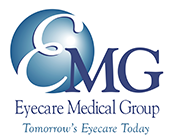
RLE or Refractive Lens Exchange is a vision correction procedure. It is most often performed on patients that may not be good candidates for LASIK or those that don’t have cataracts.
RLE involves removing the natural lens of the eye and replacing it with an artificial lens. This is a procedure that is a lot like cataract surgery, except the patient does not have cataracts. This means that there is no cloudy lens to remove. Often, people will have RLE preemptively so that they can avoid dealing with cataracts later.
RLE is for patients that are nearsighted or farsighted. The procedure is also sometimes called Clear Lens Extraction. RLE may be a better option for patients who have extreme farsightedness or nearsightedness. These refractive errors may not be correctable during traditional LASIK surgery.
What Happens During RLE?
RLE is usually performed as an outpatient procedure. You will typically have RLE performed on one eye at a time, with a week or two apart between procedures. This gives the first eye enough time to heal. The procedure itself takes around 10 to 15 minutes. An anesthetic is applied to numb the eye so there is no discomfort during the procedure.
Recovery time will usually take about a week, though it can vary depending on the patient. Patients report having improved vision as soon as several hours after the surgery. Afterward, the new lens will feel the same as your old lens and will not be noticeable to others.
The physicians at Eyecare Medical Group in Portland are experienced at performing Refractive Lens Exchange procedures. We only offer our patients the highest quality lens options available, including:
- Akreos Intraocular Lens –
- The Akreos Intraocular Lens was manufactured for use with a tiny incision, as small as 1.8 mm. This IOL is available in three different lengths, ensuring excellent fit, stability, and less reflected light.
- The Akreos IOL has a four-point haptic design, resulting in better centration. With the Akreos IOL, patients experience the best possible visual quality in all situations.
- enVista Intraocular Lens –
- enVista is designed as a monofocal intraocular lens. This means it provides a fixed focus for a particular distance, providing consistent visual excellence.
- The enVista premium IOL also ensures that patients never experience any glistening. Patients can depend on excellent contrast sensitivity and predictable visual quality with the enVista IOL.
- Tecnis Multifocal Intraocular Lens –
- The Tecnis multifocal IOL provides advanced image quality at all distances. With the Tecnis multifocal IOL, patients experience sharp vision tailored for intermediate distances.
- Toric Intraocular Lens –
- The Toric IOL is used to reduce or eliminate astigmatism. This intraocular lens provides astigmatism correction and improved distance vision in one step.
- Tecnis Symfony Intraocular Lens –
- The Tecnis Symfony IOL corrects the effects of presbyopia, which occurs when the lens loses flexibility due to age. Thanks to the Tecnis Symfony, patients can see clearly and sharply at all distances once more.
- PanOptix Trifocal Intraocular Lens –
- The PanOptix trifocal lens is the only trifocal lens available in the United States. A trifocal lens like the PanOptix provides vision at all distances: near, distance, and intermediate.
It also ensures that your vision is enhanced, so you see with clear and complete focus. This means no blurry zones, brighter colors, sharper vision, and less glare around lights.
If you are considering or Refractive Lens Exchange, have your surgery performed by physicians with a track record of success. All the eye surgeons at Eyecare Medical Group in Portland are experts in the diagnosis and treatment of cataracts and other corrective vision procedures.
Our practice offers world-class treatment in a friendly and compassionate environment. Want to learn more about Refractive Lens Exchange and if it may be right for you? Schedule a cataract screening at Eyecare Medical Group in Portland, ME now!





